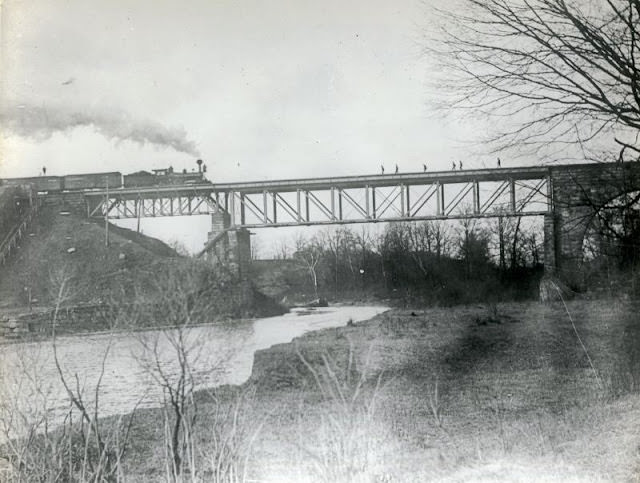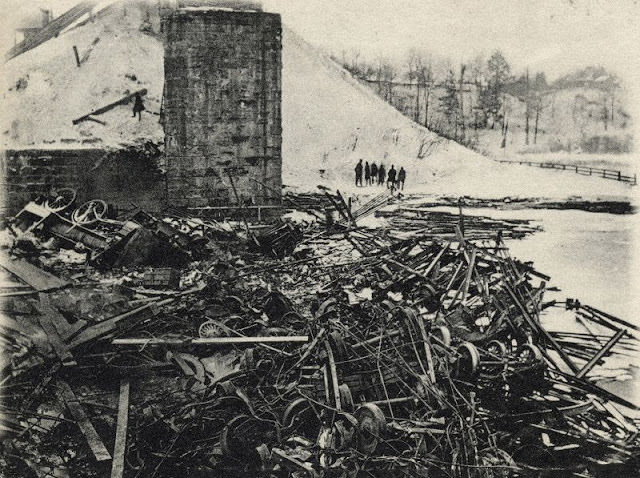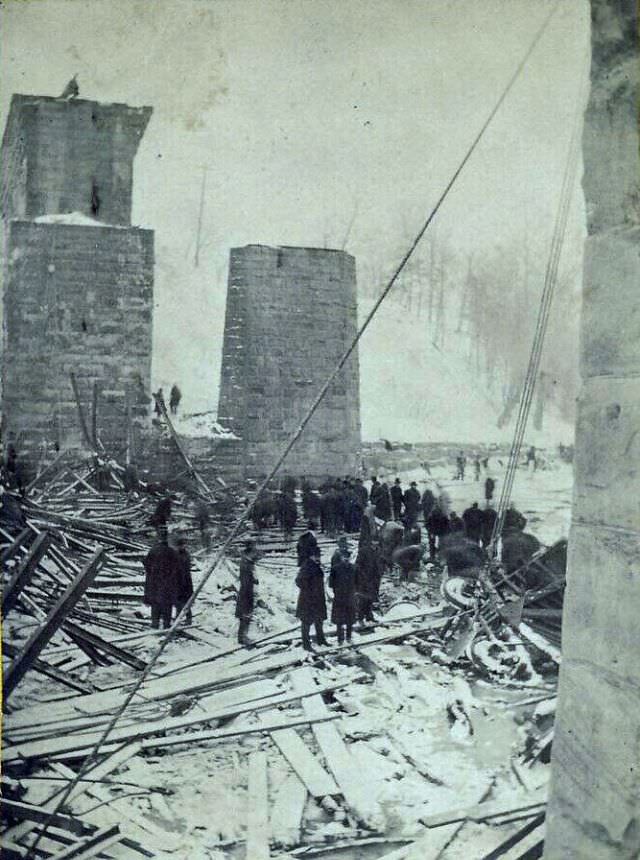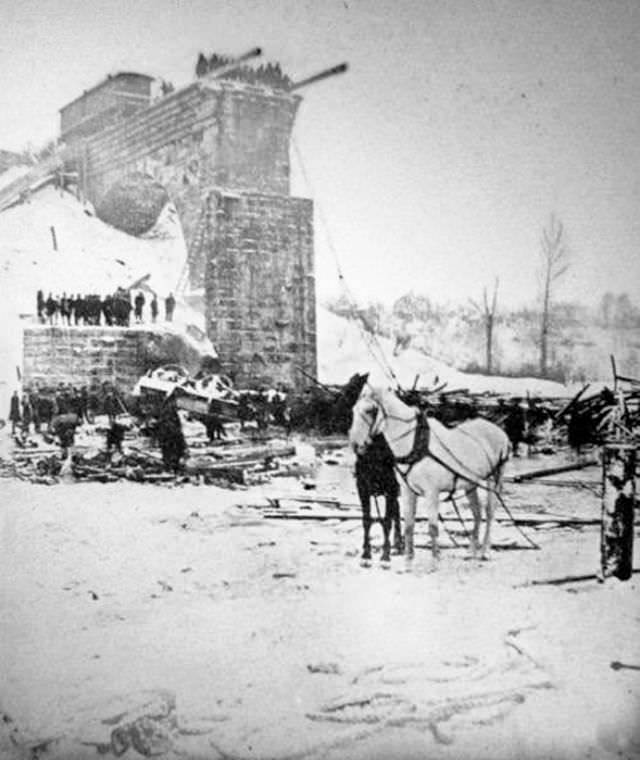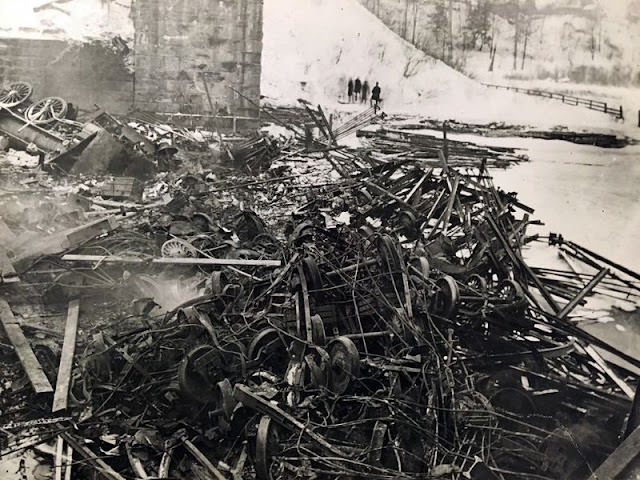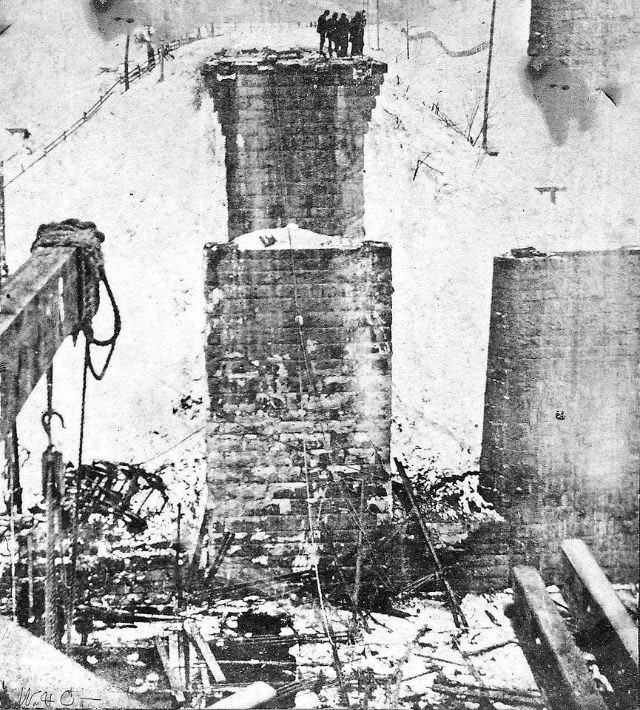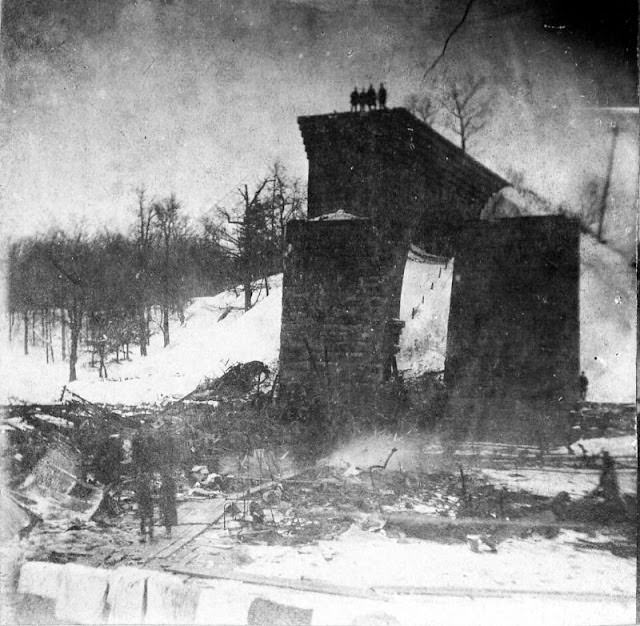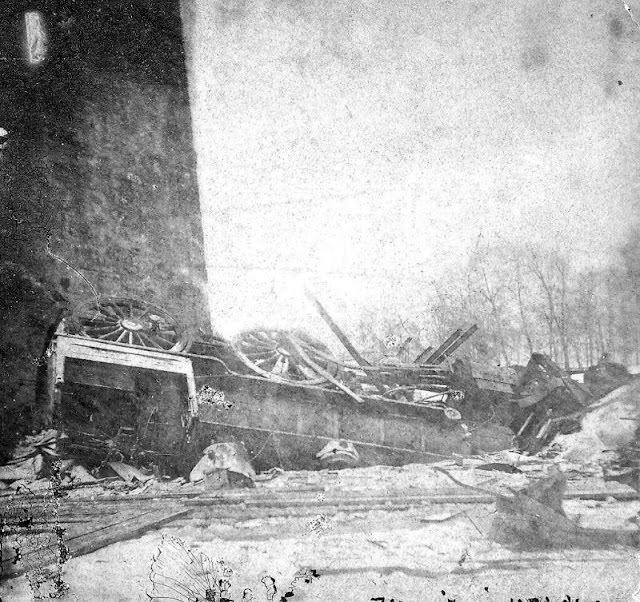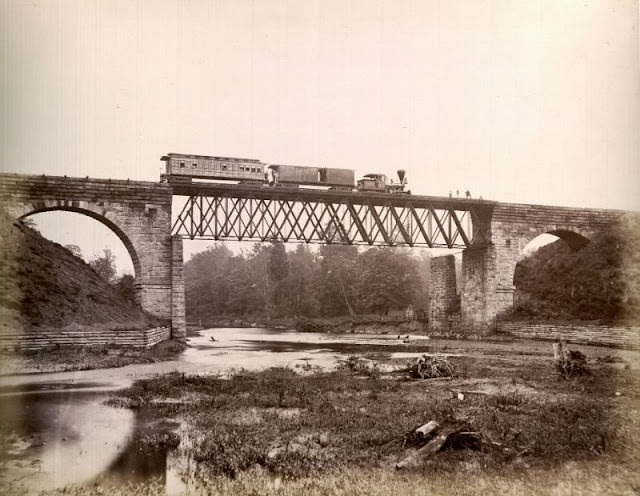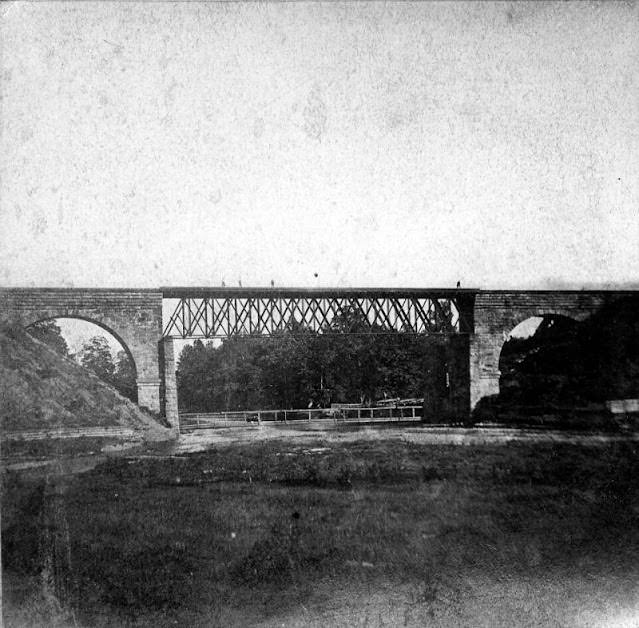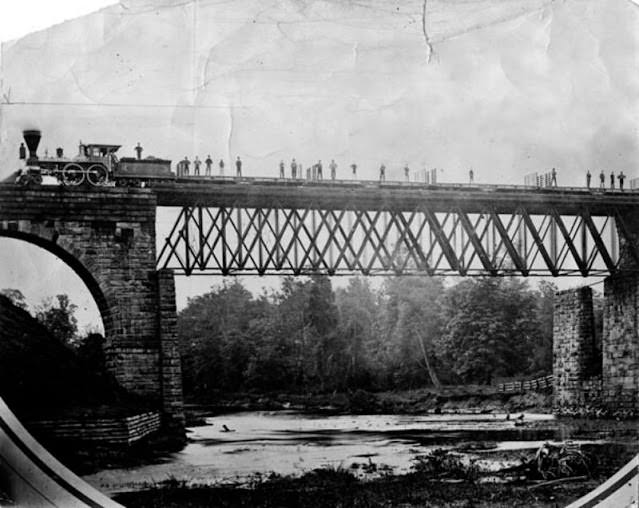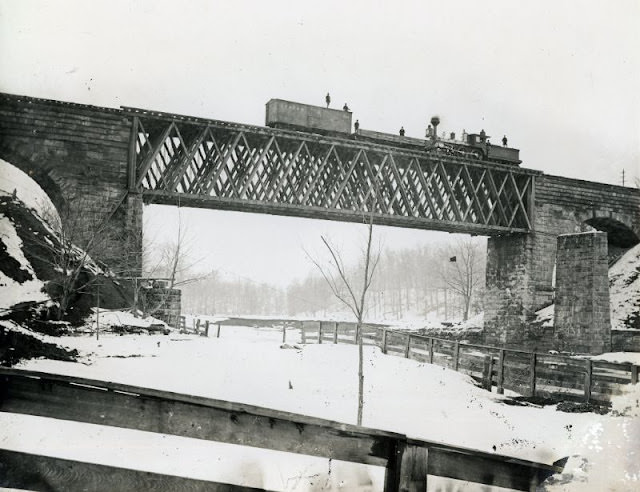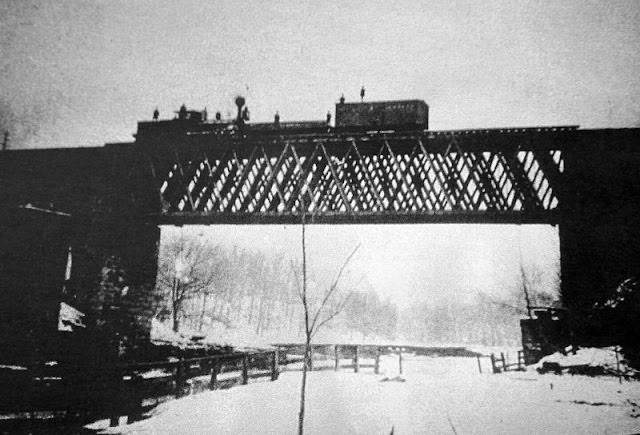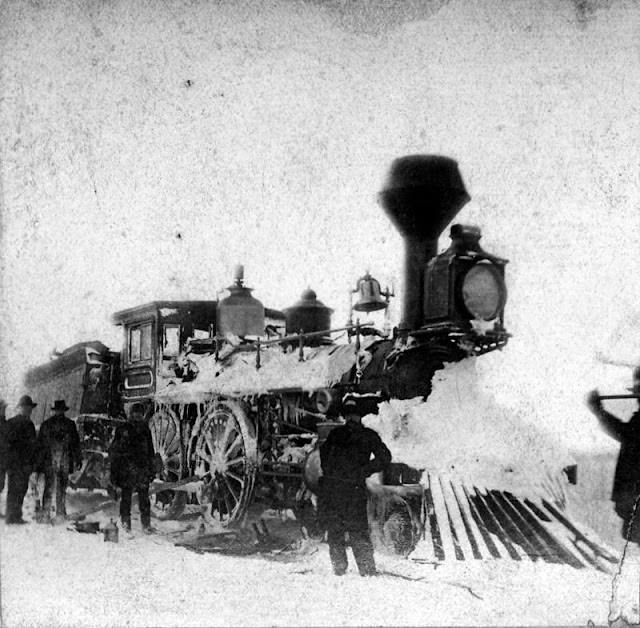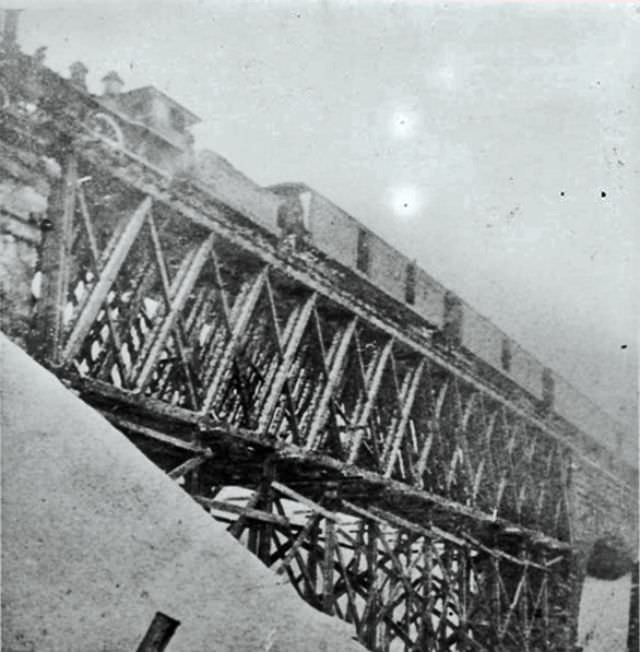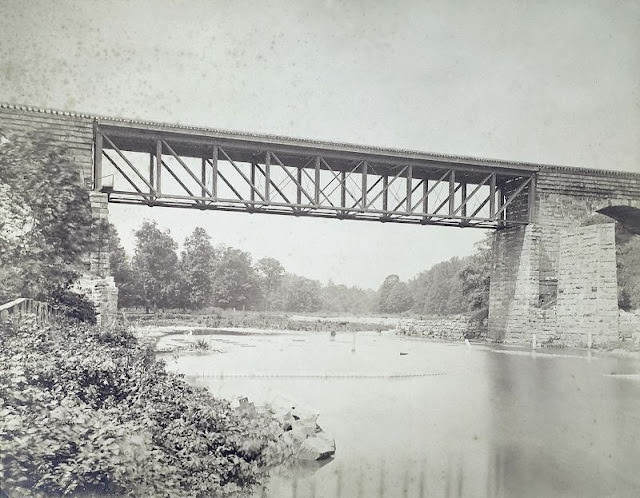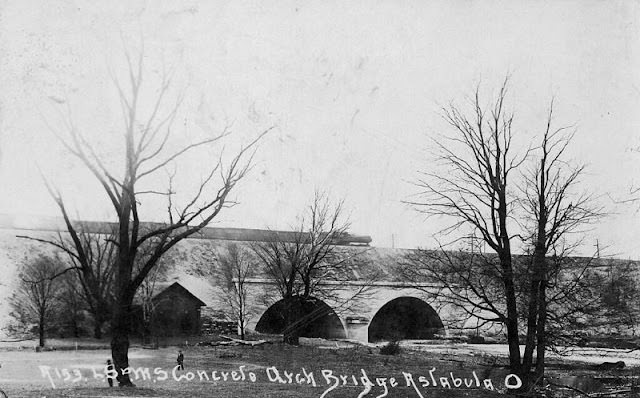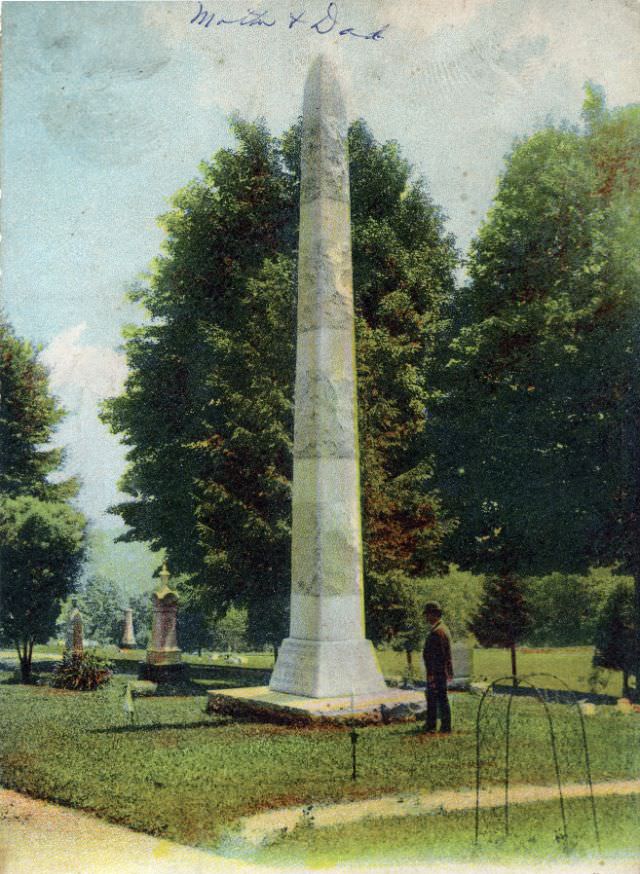On December 29, 1876, a chilling event occurred that would reverberate through the annals of American railroad history. A train known as the “Pacific Express” was crossing a bridge over the Ashtabula River in Ohio when the bridge collapsed. The train plummeted 70 feet into the icy waters below, resulting in a catastrophe that claimed 92 lives and left 64 people injured. It was one of the deadliest railroad accidents in the United States up to that point.
The Pacific Express was a fully loaded, two-engine train operated by the Lake Shore and Michigan Southern Railway. On that cold winter night, the train was filled with more than 150 passengers, along with crew members. Many were returning home after the Christmas holidays, unaware of the impending tragedy.
The Bridge: A Flawed Design
The bridge, known as the Ashtabula Bridge, was an iron structure designed by engineers Charles Collins and Amasa Stone. At the time of its construction, it was considered a marvel of engineering. However, the bridge was fundamentally flawed. The use of cast iron instead of wrought iron and the Truesdell truss design made the structure inherently weak. Adding to the vulnerability was the extreme weather that day—temperatures had dropped to as low as −10°F.
The Collapse and the Aftermath
As the Pacific Express crossed the bridge around 7:28 PM, the passengers heard a terrible cracking noise. In a matter of seconds, the bridge gave way, plunging the train into the river. To make matters worse, the stoves in the wooden cars ruptured, spreading fire among the wreckage. Rescuers faced enormous challenges, including the freezing temperature and the risk of further collapses. Despite their best efforts, the loss of life was devastating.
Investigations and Revelations
In the wake of the tragedy, several investigations were launched to determine the cause of the collapse. Engineers and experts dissected the design and materials used in the construction of the bridge. The findings were damning: poor quality of iron, flaws in the design, and inadequate safety measures were identified. Charles Collins, one of the engineers, was found dead in his home a few days later, an apparent suicide, adding another layer of tragedy to the event.
Changes in Railroad Safety Regulations
The Ashtabula River Railroad Disaster had a profound impact on railroad safety. The incident led to sweeping changes in the design and construction of railroad bridges. The use of wrought iron and later steel became standard, and rigorous safety inspections were implemented. The government also stepped in, enacting laws that mandated better safety standards for railroads.
Survivors and their Stories
While the disaster was heartbreaking, stories of survival and heroism also emerged. Conductor Webster Lewis played a significant role in helping the injured and guiding the rescue efforts. Another passenger, Philip Bliss, a well-known hymn writer, escaped from the wreck but went back to save his wife and lost his life in the process. These stories serve as solemn reminders of human resilience and courage in the face of overwhelming tragedy.
Numerous lawsuits were filed against the Lake Shore and Michigan Southern Railway following the disaster. Although it was a lengthy process, many families received compensation, albeit nothing that could truly make up for the loss of their loved ones.
The Ashtabula River Railroad Disaster is commemorated by a monument at the Chestnut Grove Cemetery in Ashtabula, Ohio. The monument stands as a tribute to those who lost their lives and as a somber reminder of the importance of engineering integrity and safety.


